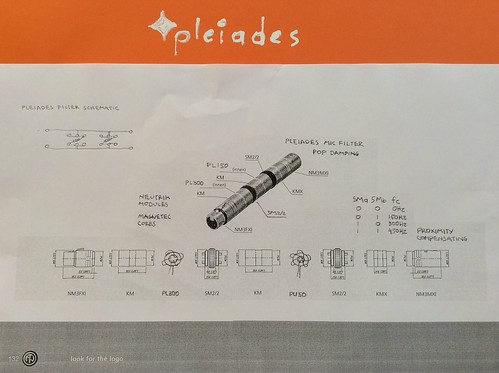
4 focus points. (optimum bass proximity compensated distances from sound source to microphone)
For 16 points use 4 cascaded Pleiades filters.
Pop blast filtering due to electromagnetic damping.
Passes phantom power as inductors are in parallel with signal.
Gentle 6dB per octave low cut filtering (1st order slope as filter consists of the mic's output impedance in series with the Pleiades filter's inductance) for overall flat frequency response compensating for the increase of bass content when directional mics at used at close distance.
Relatively few turns needed due to the extremely high inductance index of nanocrystalinne Magnetec cores, Magnetec 073 tape wound nanoperm core or equivalent. Typical number of turns is 40 - 100.
Ease of construction due to the amazing Neutrik modules with switch.
Other variations can include impedance matching transformers. Step up transformers with switched primary in order to low cut and at the same time make up gain.(decreasing primary turns increases cutoff while increases step up ratio).
Impedance matching transformers with deliberate low primary inductance to compensate for excessive bass boost of vocals at close mic distance due to proximity effect. Ambient low frequency noise noise is canceled.
Pop filtering due to electromagnetic damping. (the lower the frequency the lower the impedance of the inductor in parallel thereby converting voice coil movement to heat.
Neutrik connectors and Magnetec cores are the most beautiful worldwide.
Pleiades public domain dedication.
More details:
Directional (unidirectional cardioid) microphones boost bass frequencies progressively below 1 KHz when a singer is closer than an inch to a microphone, the usual case.
The amount of boost can easily be heard experimentally (in practice) or seen in any directional microphone data sheet Shure for example. This can prove an advantage as we shall later see.
The low cut filter of most consoles is at 100Hz giving erroneous results and we are all familiar with the unnatural bass heavy voice when a singer is close to the microphone for avoiding acoustic feedback. The amount of bass boost as seen on curves is inversely proportional to the mic source distance and can as high as +15dB at 200Hz.
The Pleiades filters intends to give a flat overall response at the usual different close preferred microphone mouth distances. It may be thought to act analogous to a macro camera focusing lens for very near objects.
Added advantage is a very high signal to noise ratio capturing the detail of the faintest voice even in high ambient noise environments. (Bass environment content is dramatically reduced while voice remains natural).
The Pleiades filter consists of just an inductor in parallel with the mic output signal. This gives the added advantage of electromagnetically damping the mic membrane and dramatically reducing pop and wind noise.
Magnetec makes possibly the best noncrystalline magnetic cores and Neutrik the best modular connectors. It seems natural to combine these elements to make a state of the art variable Pleiades filter.
No comments:
Post a Comment